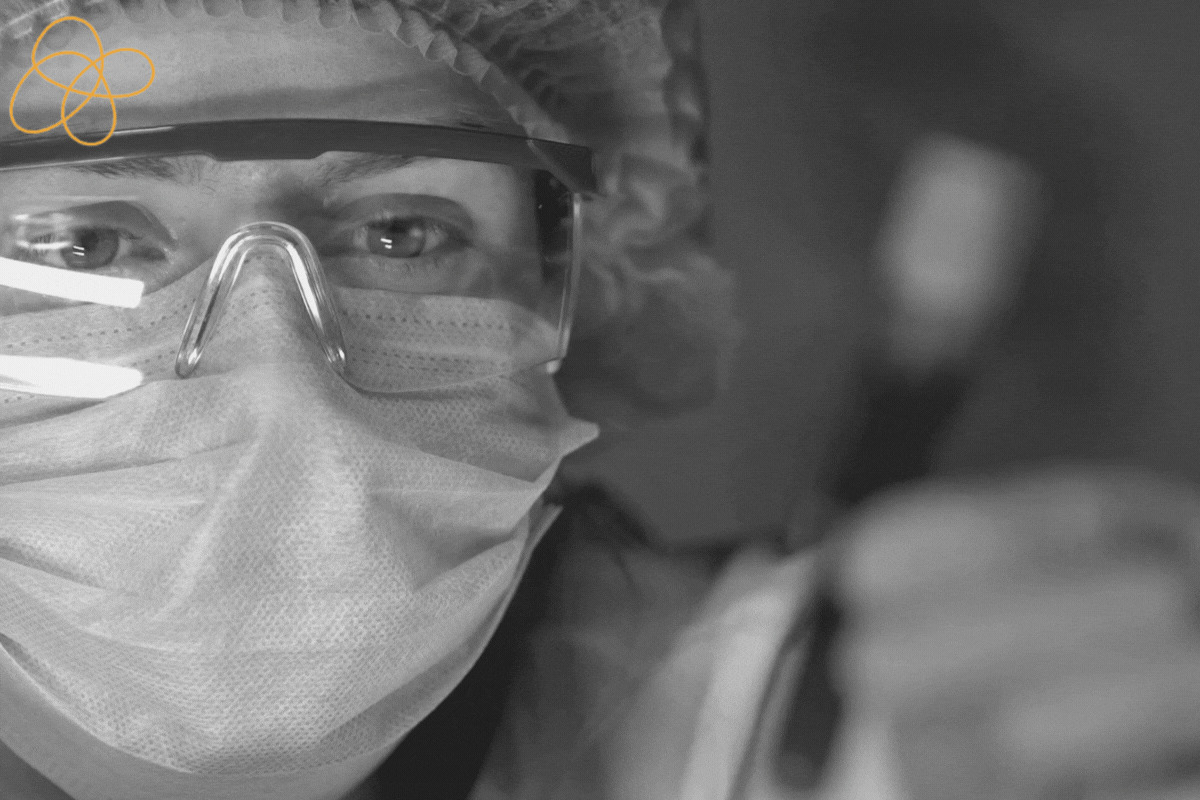The field of biologics has revolutionized modern medicine, offering innovative and effective treatments for a wide range of diseases. These complex pharmaceutical products, such as monoclonal antibodies (mAbs) and therapeutic proteins, are derived from living organisms and require meticulous control throughout manufacturing to ensure their quality, safety, and efficacy.
Developing a robust control strategy is vital in biologic manufacturing, as it enables manufacturers to define critical quality attributes (CQAs), establish control parameters, implement process controls, and employ advanced analytical techniques. By doing so, they can consistently produce biologic products that meet the highest standards and deliver optimal patient outcomes.
In this article, we will explore the critical components of developing a robust control strategy for biologics. By examining case studies and real-world examples, we will illustrate the significance of controlling critical process parameters, conducting risk assessments, implementing in-process monitoring, and utilizing advanced technologies to ensure the success of biologic manufacturing.
Join us as we delve into these case studies, shedding light on the challenges faced in developing control strategies and the solutions to overcome them. By understanding the importance of a comprehensive control strategy, we can appreciate the complexity involved in manufacturing biologics and the measures taken to guarantee their quality, efficacy, and safety.
Case Study 1: Controlling Critical Process Parameters for Monoclonal Antibody (mAb) Production
In the case of mAb production, controlling critical process parameters is crucial to ensure consistent product quality. A pharmaceutical company implemented a robust control strategy by closely monitoring and optimizing critical parameters, such as cell culture conditions and purification techniques.
By carefully controlling the temperature, pH, and dissolved oxygen levels during cell culture, they improved cell growth, productivity, and enhanced glycosylation patterns. Furthermore, implementing advanced purification techniques and closely monitoring critical purification parameters enabled the company to achieve high product purity and yield. This case study highlights how controlling critical process parameters can produce consistent and high-quality mAb production.
In this case study, let’s delve deeper into the control strategy for mAb production. While developing a robust control strategy, the pharmaceutical company identified critical process parameters such as cell culture conditions and purification techniques. These parameters significantly influence the quality, yield, and efficacy of the mAb product.
Controlled cell culture conditions: Maintaining optimal temperature, pH, and dissolved oxygen levels during cell culture is crucial for successful mAb production. If these parameters deviate from the desired range, it can lead to reduced cell growth, diminished productivity, and compromised product quality. For example, excessively high temperatures can cause denaturation of proteins, affecting the structure and function of the mAb.
Purification optimization: Purification techniques separate the desired mAb product from impurities. However, if the purification process is not adequately controlled, it can lead to suboptimal product purity and yield. Factors such as column performance, elution conditions, and buffer composition must be closely monitored and optimized. Deviations in these parameters can result in lower product purity, compromised functionality, or reduced yield.
Examples of potential issues: Several factors can go wrong if critical process parameters are not adequately controlled. For instance:
- Fluctuations in cell culture temperature: Inadequate temperature control during cell culture can lead to reduced cell viability, lower productivity, and altered glycosylation patterns. This can impact the mAb’s efficacy, stability, and immunogenicity.
- pH imbalance: Failure to maintain the desired pH range in cell culture can cause cell stress, leading to reduced growth and productivity. It can also affect the stability and conformational integrity of the mAb molecule, impacting its therapeutic properties.
- Poor purification optimization: Insufficient monitoring and control of purification parameters, such as column performance and elution conditions, can result in impurities contaminating the final mAb product. This can compromise product quality, efficacy, and patient safety.
Case Study 2: Risk Assessment and Mitigation in Biologic Manufacturing
Risk assessment plays a vital role in developing a control strategy for biologics. A case study on viral clearance during downstream processing showcased the significance of implementing risk mitigation strategies. The manufacturing process was thoroughly evaluated to identify potential sources of viral contamination.
The company effectively minimized the risk of viral contamination by implementing robust viral clearance steps and continuously monitoring and optimizing the process. This case study emphasizes the importance of conducting thorough risk assessments and implementing appropriate mitigation strategies to ensure the safety of biological products.
In this case study, let’s explore the importance of risk assessment and mitigation strategies in biologic manufacturing, focusing on viral clearance during downstream processing.
Risk assessment: The biopharmaceutical company conducted a thorough risk assessment to identify potential sources of viral contamination. This involved evaluating raw materials, equipment, and process steps to identify potential risks and develop appropriate mitigation measures.
Mitigation strategies: The company implemented robust viral clearance steps during downstream processing to mitigate the risk of viral contamination. These steps may include virus filtration, chromatography, and inactivation methods. By implementing effective viral clearance measures, the company ensured the safety and purity of the final biologic product.
Examples of potential issues: Failure to implement effective risk assessment and mitigation strategies can lead to various problems, including:
- Viral contamination: If the risk of viral contamination is not adequately assessed and mitigated, it can result in harmful viruses in the final biologic product. This poses significant risks to patient safety and can have severe consequences.
- Ineffective viral clearance methods: If the viral clearance steps are not properly designed, validated, or monitored, they may not effectively remove or inactivate viruses in the manufacturing process. This can compromise the safety and purity of the biologic product.
Case Study 3: Real-Time Process Monitoring for Therapeutic Protein Production
Real-time process monitoring is a powerful tool for developing a robust control strategy for biologics. A biopharmaceutical company employed process analytical technology (PAT) for the production of therapeutic proteins. They monitored critical process parameters, such as glucose consumption, lactate production, and cell viability, in real-time during fermentation.
The company achieved optimal process conditions, improved product quality, and increased yield by continuously monitoring these parameters and making immediate adjustments. This case study demonstrates the benefits of real-time process monitoring in enhancing process control and ensuring the consistency and quality of therapeutic protein production.
In this case study, let’s explore the significance of real-time process monitoring through process analytical technology (PAT) in the production of therapeutic proteins. PAT allows for continuous monitoring of critical process parameters during fermentation, enabling timely adjustments and optimization.
Real-time monitoring benefits: Real-time process monitoring offers several advantages in developing a robust control strategy for therapeutic protein production.
- Optimization of critical parameters: Continuous monitoring of critical process parameters, such as glucose consumption, lactate production, and cell viability, provides valuable insights into the fermentation process. It allows manufacturers to identify optimal conditions and make immediate adjustments to maintain these parameters within the desired range. This optimization enhances product quality, yield, and consistency.
- Early detection of deviations: Real-time monitoring enables the early detection of process deviations or abnormalities. If any parameter strays outside the defined range, immediate corrective actions can be taken to prevent negative product quality or yield impacts. By addressing issues in real time, manufacturers can reduce the risk of batch failures or variations, ultimately ensuring a consistent and reliable supply of therapeutic proteins.
- Process understanding and control: Continuous monitoring and analyzing process data lead to a deeper understanding of the relationships between critical process parameters and product quality attributes. This knowledge facilitates the establishment of robust control strategies, as it allows manufacturers to identify the key factors that influence product characteristics and ensure their control within acceptable ranges.
Examples of potential issues: Despite the benefits of real-time process monitoring, challenges can arise if it is not effectively implemented or monitored. Here are a few examples:
- Sensor malfunction or calibration issues: Real-time monitoring relies on accurate and reliable sensors. If sensors malfunction or provide incorrect readings due to calibration issues, it can lead to inaccurate process monitoring and decision-making. This can result in deviations going unnoticed, compromising product quality or yield.
- Insufficient data analysis and interpretation: Real-time process monitoring generates vast data. If manufacturers fail to analyze and interpret this data effectively, they may miss important trends or deviations. It is crucial to have robust data analysis techniques and trained personnel who can identify meaningful patterns and take appropriate actions based on the data.
- Inadequate response to deviations: Real-time monitoring only proves effective if prompt actions are taken in response to deviations. Failure to react quickly or appropriately to abnormal process conditions can lead to irreversible damage to the product or process, resulting in lower quality or failed batches.
By addressing these challenges and ensuring accurate monitoring, thorough data analysis, and timely corrective actions, manufacturers can harness the benefits of real-time process monitoring to optimize therapeutic protein production and maintain consistent product quality.
Conclusion
Developing a robust control strategy is paramount in manufacturing biologics, such as monoclonal antibodies (mAbs) and therapeutic proteins. The case studies presented in this article shed light on the critical components of control strategy development, emphasizing the importance of controlling critical process parameters, conducting risk assessments, implementing in-process monitoring, and utilizing advanced technologies.
The control strategy for mAb production demonstrated the significance of optimizing cell culture conditions and purification techniques to ensure consistent product quality and yield. Risk assessment and mitigation strategies highlighted the importance of identifying potential sources of contamination and implementing effective viral clearance steps to guarantee product safety. Real-time process monitoring using PAT exemplified the benefits of continuous monitoring, early deviation detection, and process optimization for therapeutic protein production.
Throughout these case studies, potential challenges and pitfalls were identified. These challenges include sensor malfunction, insufficient data analysis, and inadequate response to deviations. Manufacturers must address these issues by ensuring reliable sensors, employing robust data analysis techniques, and promptly responding to process deviations to maintain the integrity of the control strategy.
In conclusion, the development of a robust control strategy is essential in biologic manufacturing to ensure the quality, safety, and efficacy of these advanced therapeutics. By implementing a comprehensive control strategy, manufacturers can consistently produce high-quality biologic products, contributing to improved patient outcomes and advancing healthcare. As the demand for biologics continues to grow, the continued investment in control strategy development will play a vital role in meeting the increasing standards and expectations of the industry.






